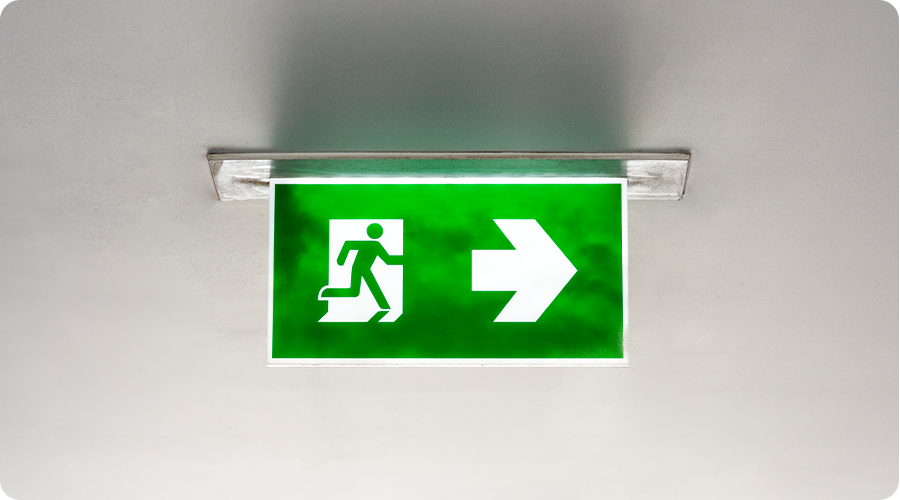If you’re an employer or business owner of a premises that isn’t a residential property, it’s your responsibility to keep everyone on the property safe.
Due to this, it is essential that everyone on the property knows how to exit the building safely if a fire was to occur. This is where fire evacuation plans and maps come in.
Fire safety in the workplace
Fire safety in the workplace involves a number of different key steps to identify potential fire hazards, evaluate the risks of the fire hazards and take action to respond to or prevent fires from occurring.
In order to be compliant with fire safety legislation in the workplace, you must conduct annual fire risk assessments and create fire safety and evacuation plans.
What is a fire evacuation plan?
Fire evacuation maps are diagrams that show how to safely exit a building in the event of a fire and they make up your workplace’s FEEP.
They are an essential part of the building's fire safety strategy.
Are fire evacuation maps a legal requirement?
Although they are not explicitly stated as being a legal requirement in the UK, fire evacuation maps are considered necessary in order to comply with the Regulatory Reform (Fire Safety) Order 2005.
This is because the law requires building owners and managers to provide clear information about evacuations, including designated escape routes.
What should be on a fire evacuation map?
When you’re creating a fire evacuation map, there are a few key details that we recommend including:
What does a fire evacuation map look like?
A fire evacuation map looks like floor plans of the building, but it will show all of the safest exit routes, emergency exits and assembly points.
You may have seen examples of a fire evacuation plan in hotel rooms, as they are usually displayed on the back of the door to your hotel room and throughout the hallways.

How to create a fire evacuation plan
To create a FEEP, you will need to conduct a thorough site assessment. We highly recommend you familiarise yourself with business premises and then move forward with the steps below to create your evacuation plan.
The first step in creating a fire evacuation plan is to conduct a fire risk assessment. You will need to get a comprehensive understanding of the fire risks and associated hazards that are present on your property in order to make an appropriate evacuation plan.
You should be identifying the fire hazards and those who are at risk, evaluate and remove the risk, record your findings, provide any necessary training to your staff and update the assessment on a regular basis.
If you’re not comfortable conducting a fire risk assessment yourself, our team at Lanahan Risk Management Services can help.
Once you have conducted your fire risk assessment, you can then move onto the following steps:
Whilst you are creating your FEEP, you should also include:
Get the Right Fire Safety Policies in Place
Using the right fire evacuation signage
To make sure your property has the right fire evacuation signage, you will need to use the standardised signs that indicate the direction of the emergency exits, assembly points and any other critical information that is needed during an evacuation.
In the UK, they will typically be bright red or green with the appropriate iconography in white. For example, emergency exits will usually be white arrows pointing towards an escape route on a green background.
At Lanahan Risk Management Services, we can help to ensure all of your signs are in the correct location, have the correct position on the wall or ceiling and can be seen even with poor visibility.

Fire exit routes
Your fire exit routes are the paths that lead to emergency exits, such as stairwells and doors in the event of a fire emergency. They must be well lit, direct and unobstructed.
Fire exit routes must include:
Fire exit routes should NOT include:

